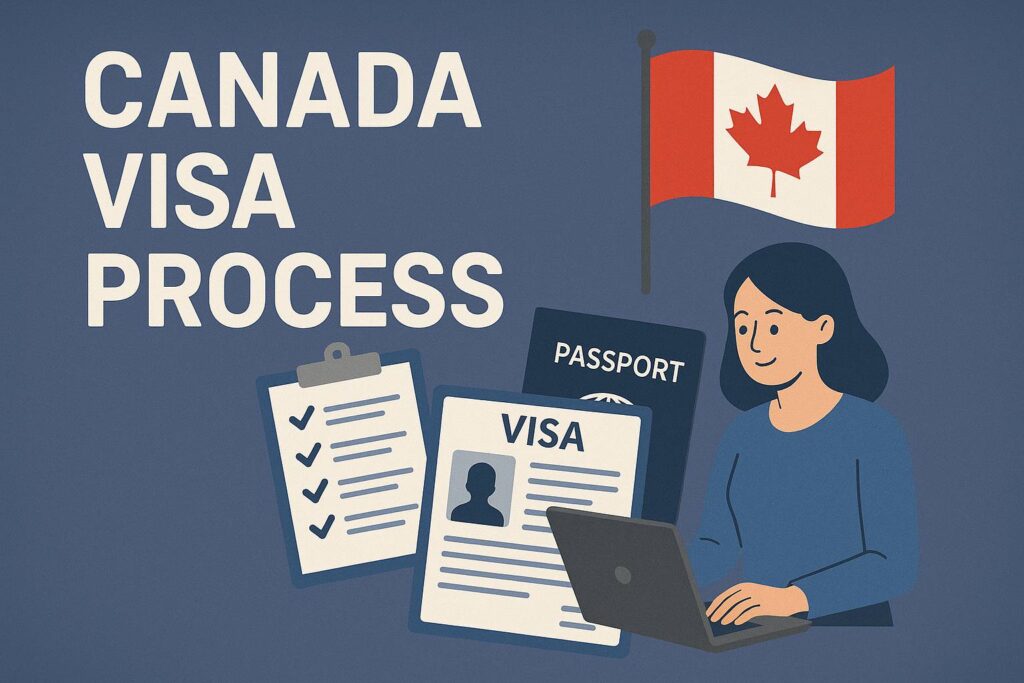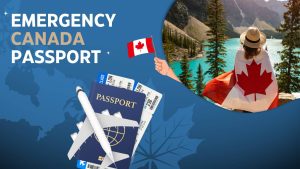In 2025, more people than ever are choosing Canada for its career opportunities, world-class education, and safe, multicultural lifestyle. As one of the most welcoming countries for immigrants, Canada offers a wide range of visa options for both temporary and permanent residents.
To speed up your approval, you need to understand the Canada Visa Process, prepare your documents correctly, and follow a smart strategy. Planning to visit as a tourist, study at a top Canadian university, work for a local employer, or settle permanently, this guide will show you the fastest ways to get your Canadian visa approved in 2025—with every important detail clearly explained.
Why Choose Canada in 2025?
Canada continues to be one of the most desirable destinations in the world for immigration, offering a high standard of living, strong job markets, and world-class education and healthcare systems. In 2025, the Canadian government is expected to welcome approximately 395,000 new permanent residents, a number carefully adjusted from previous higher targets to ensure sustainable infrastructure, housing supply, and healthcare support. This new immigration strategy reflects a shift toward balancing growth with social stability, while still addressing labor shortages in key sectors like healthcare, construction, and technology.
In addition to a stable economy and transparent immigration policies, Canada is globally recognized for its inclusiveness and cultural diversity. Major cities such as Toronto, Vancouver, Calgary, Ottawa, and Montreal not only offer exciting lifestyle opportunities but also act as hubs for education, technology, and financial services. Whether you’re an international student, skilled worker, or entrepreneur, Canada offers you the freedom to grow, contribute, and build a life rooted in security and opportunity.
Understanding the Canada Visa Process in 2025
Canada’s immigration system is recognized for being structured, merit-based, and transparent. The Immigration, Refugees and Citizenship Canada (IRCC) oversees all applications and offers several immigration pathways tailored to diverse applicant backgrounds. In 2025, IRCC is focusing more on streamlining processes and integrating automation and AI to reduce backlogs and improve processing times.
Here are the major visa categories in 2025:
- Express Entry: For skilled professionals under the Federal Skilled Worker Program, Federal Skilled Trades Program, and Canadian Experience Class. This is one of the fastest ways to gain permanent residency through a point-based system.
- Provincial Nominee Program (PNP): Provinces and territories select candidates based on their local labor market demands. Each province has its own eligibility requirements, and a nomination boosts your Express Entry profile significantly.
- Study Permit: Allows international students to pursue education in designated learning institutions (DLIs). Graduates may qualify for a Post-Graduation Work Permit (PGWP), which can lead to permanent residency.
- Work Permit: For applicants with valid job offers from Canadian employers. Streams include the Temporary Foreign Worker Program (TFWP) and the International Mobility Program (IMP).
- Family Sponsorship: Enables Canadian citizens and permanent residents to reunite with family members, including spouses, children, parents, and grandparents.
Applicants should carefully evaluate which program best suits their profile to avoid delays or rejections. Consulting with regulated Canadian immigration consultants (RCICs) or using official government tools can help streamline the process.
Step-by-Step Guide to Fast-Track Your Canadian Visa in 2025
1. Determine the Appropriate Immigration Program
Before applying, it’s essential to understand your objectives—whether you’re looking to work, study, reunite with family, or become a permanent resident. Skilled workers may benefit most from Express Entry or PNPs, while business owners should visit the Start-Up Visa or Self-Employed Persons Program. International students can begin with a study permit and transition to permanent residency via the Canadian Experience Class after graduation.
It’s also important to consider regional preferences—some provinces are actively seeking specific occupations, and aligning your profile with their labor needs can increase your chances of nomination.
2. Prepare and Organize Necessary Documentation
Being proactive and accurate with your documentation is key to a successful application. Each visa category has its own list of required documents. For Express Entry, for instance, you’ll need:
- A valid passport with adequate validity
- Language proficiency results (IELTS, CELPIP, or TEF Canada)
- Educational Credential Assessment (ECA) from an authorized body
- Proof of funds showing you can support yourself in Canada
- Police clearance certificates and medical examination reports
- Job offer letter (if applicable)
Maintaining organized records not only speeds up application reviews but also increases your credibility with IRCC. Double-check all translated documents and ensure they’re certified by official translators.
3. Submit Your Application Online
All applications for permanent residence, study permits, and work permits are now processed through Canada’s official IRCC portal. The system has become more streamlined in 2025, with a user-friendly dashboard to track your application status, receive updates, and submit additional documents when required.
Ensure your application is error-free before submission. Any discrepancies or incomplete fields can lead to delays or outright refusals. Also, use the Document Checklist provided by IRCC to cross-verify that nothing is missed.
4. Leverage Express Entry for Skilled Workers
The Express Entry system is Canada’s flagship program for economic immigration and has undergone a few enhancements in 2025 to better identify top talent. Under the Comprehensive Ranking System (CRS), candidates are scored based on age, education, language proficiency, and work experience.
Ways to improve your CRS score include:
- Retaking language tests to increase your scores
- Completing additional degrees or certifications
- Gaining Canadian work experience
- Securing a job offer from a Canadian employer
- Obtaining a provincial nomination
Once your profile is in the Express Entry pool, you may receive an Invitation to Apply (ITA) during one of the bi-weekly draws if your CRS score meets the cut-off. Current processing times are around 4 to 6 months, making this one of the most efficient ways to obtain permanent residency.
5. Visit Provincial Nominee Programs (PNPs)
In 2025, PNPs have gained even more significance due to the increasing role provinces play in shaping immigration based on regional labor market needs. Over 80 immigration streams are offered across different provinces, each targeting various professions and skill levels.
For example:
- Ontario’s Human Capital Priorities Stream focuses on tech and healthcare occupations.
- Alberta’s Accelerated Tech Pathway provides rapid nominations for IT professionals.
- Saskatchewan and Manitoba target agricultural and skilled trades professionals.
Receiving a nomination under PNP adds 600 points to your CRS score in Express Entry, practically guaranteeing an invitation to apply. PNPs are ideal for applicants with specific job offers or experience in sectors facing labor shortages in a particular province.
6. Consider the Global Talent Stream for Tech Professionals
If you’re a technology professional, the Global Talent Stream (GTS) is a game-changing opportunity in 2025. Designed to support Canada’s tech industry, GTS provides two-week processing times for work permits of eligible candidates.
Eligible occupations include:
- Software Engineers and Designers
- Web Developers and Programmers
- Information Systems Analysts
- Data Scientists
- AI & Machine Learning Specialists
To qualify, you must have a job offer from an eligible employer designated by Employment and Social Development Canada (ESDC). The employer must also demonstrate a commitment to creating jobs and transferring skills to Canadians. The GTS not only accelerates entry into Canada but also serves as a strong foundation for permanent residency through pathways like Canadian Experience Class.
Tips to Accelerate Your Canada Visa Approval
Follow these practical tips to speed up your Canada visa approval and avoid unnecessary delays.
Work with Licensed RCICs (Regulated Immigration Consultants):
Hire a licensed RCIC to review your application. They know IRCC rules inside out and help ensure your documents are complete, accurate, and error-free. This expert guidance reduces mistakes that commonly cause delays or rejections.
Complete Upfront Medicals and Biometrics:
Schedule your medical exam with an IRCC-approved panel physician as soon as you get your instruction letter. Book your biometrics appointment promptly and submit your data quickly. Early completion of these requirements keeps your application moving smoothly and prevents hold-ups.
Avoid Misrepresentation:
Always provide truthful and complete information. Misrepresenting facts or submitting fake documents can lead to a visa ban of up to five years. Be honest to build trust with immigration officials and avoid lengthy investigations.
Track Your Application:
Check your IRCC online account regularly for updates or requests for additional documents. Respond quickly to any communication to keep your application on track and prevent unnecessary delays.
Canada Entry Requirements – What’s New in 2025
By being proactive, thorough, and honest, you can drastically reduce wait times and improve your chances of a swift Canada visa approval. Taking control of each stage in the process empowers you to navigate the system confidently and efficiently.
FAQs
1. What are the different types of visas available for Canada?
Canada offers several visa types including Visitor Visas (Tourist), Study Permits, Work Permits, and Permanent Residency visas such as Express Entry and Provincial Nominee Programs (PNP).
2. How long does the Canada visa process take?
Processing times vary by visa type and applicant country but typically range from a few weeks for visitor visas to several months for permanent residency applications.
3. What documents do I need to apply for a Canadian visa?
Common documents include a valid passport, completed application forms, proof of funds, purpose of visit, biometrics, medical exams, and supporting documents like invitation letters or job offers depending on the visa type.
4. Can I apply for a Canada visa online?
Yes, most Canadian visa applications can be submitted online through the official Immigration, Refugees and Citizenship Canada (IRCC) website, which streamlines the process.
5. How do I know if I am eligible for a Canadian visa?
Eligibility depends on the visa category, your background, work experience, education, financial stability, and in some cases, language proficiency. The IRCC website provides detailed eligibility criteria for each visa type.
6. What is biometrics and do all applicants need to provide it?
Biometrics include fingerprints and a photo, required to verify your identity. Most applicants between ages 14 and 79 must provide biometrics as part of the application.
7. Can I work in Canada on a visitor visa?
No, a visitor visa does not permit work. To work legally, you need a valid work permit issued by the Canadian government.
8. What is the fastest way to get approved for a Canada visa?
Submitting a complete, error-free application with all required documents, completing medical and biometric requirements early, and using services of licensed immigration consultants can accelerate approval.
9. How do I check the status of my Canada visa application?
You can track your application status by logging into your online IRCC account using your unique application number.
10. What happens if my visa application is refused?
If refused, IRCC provides reasons for denial. You may reapply after addressing the issues or appeal if applicable, depending on the visa type.






